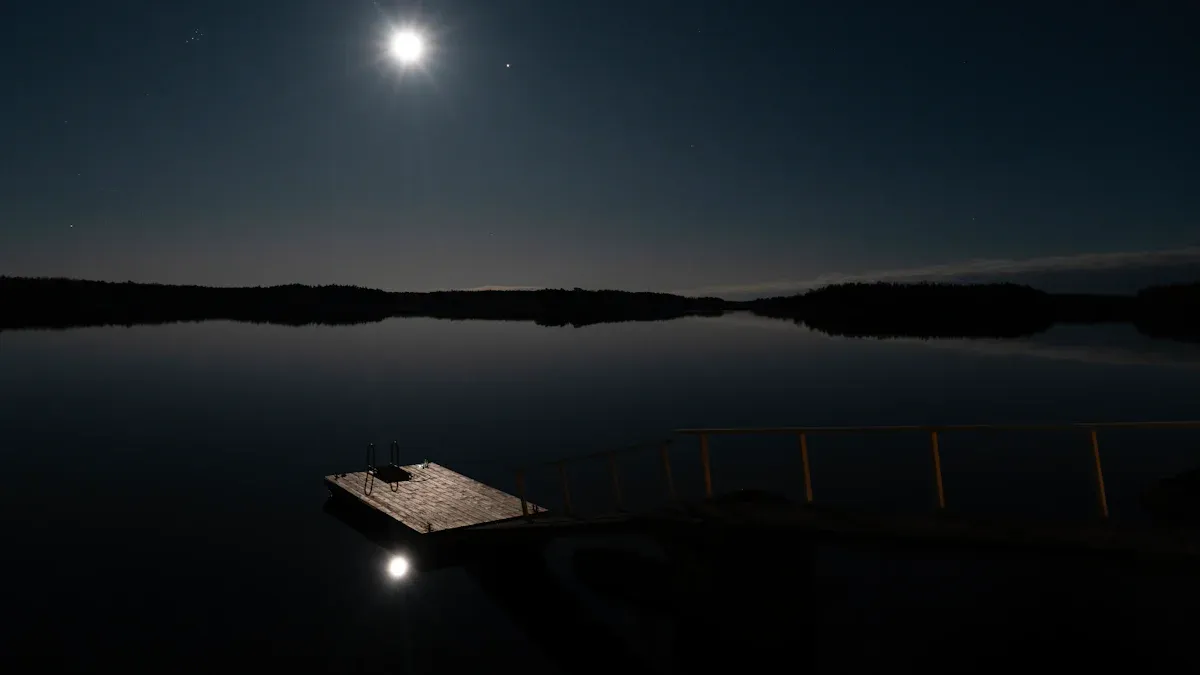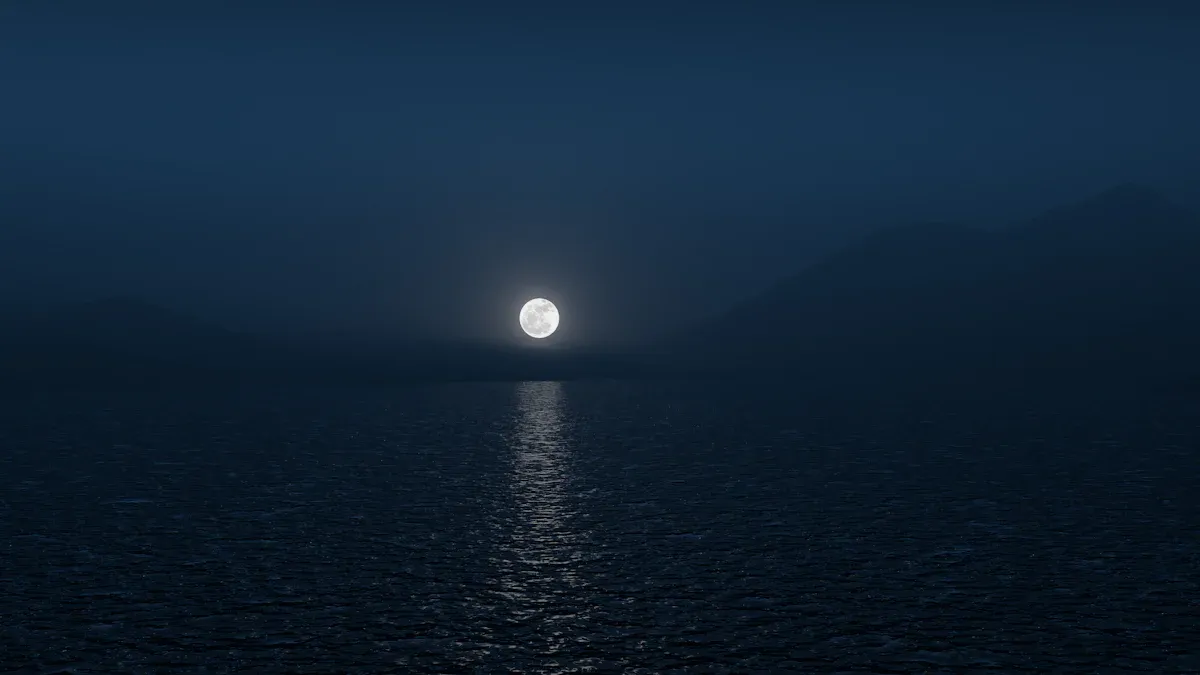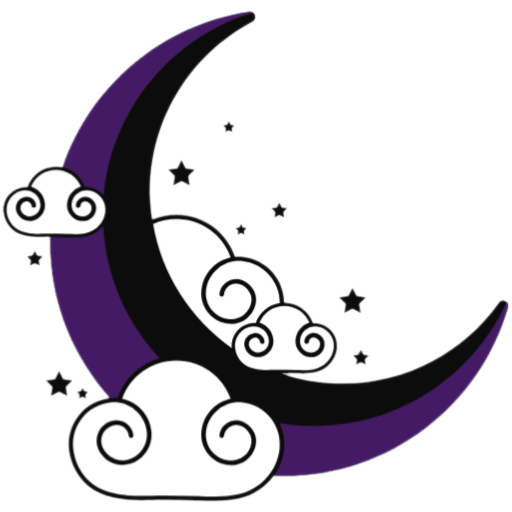
Have you ever stared at the moon on water and felt like it was hiding a secret? The way the moon glows and dances on the surface can feel almost magical. Across time, people have connected the moon2 and water to ideas of mystery and change. You might’ve noticed how the moon seems tied to the tides, pulling water back and forth like it’s telling a story. These connections have sparked myths that weave the moon’s glow and water’s flow into tales of cycles and transformation.
Key Takeaways
The moon and water show cycles of change and renewal. Their link creates myths about growing and transforming.
Watching the moon on water can make you curious. It helps you think deeply and face new challenges.
The moon’s pull causes tides, showing nature’s balance. This rhythm affects feelings and the flow of life.
Many cultures have myths about the moon and water. These stories show how nature and spirituality matter to people.
The full moon’s energy impacts nature and inspires traditions. It reminds us of life’s cycles and our world connection.
The Symbolism of the Moon and Water

The moon and water have always worked together in myths. They’ve inspired stories about life’s mysteries, changes, and cycles. Let’s explore how these two forces shaped legends.
Cycles and Renewal in Moon Folklore
Have you noticed the moon changes shape every night? Its phases—from full to crescent—show life’s cycles. In myths, these phases mean growth and renewal. For example:
The full moon stands for change and self-discovery. It’s like a bright light helping you find your inner magic.
The waning crescent means letting go. It’s a time to heal, like water washing away the old to welcome the new.
Water also shows renewal, just like the moon. Rivers flow, and oceans move, showing life’s cycles. The moon on water reminds us that change is natural and important.
Reflection and Mystery of the Moon on Water
Have you ever seen the moon on water and felt curious? Its shimmering reflection feels magical, almost like it’s hiding secrets. This mystery has inspired myths for ages.
In some cultures, the moon’s reflection on water is seen as a doorway to another world. The water acts like a mirror, showing hidden truths or spiritual messages. Some believe looking at the moon on water can boost intuition or connect you to lunar magic.
Fun fact: In Japan, “tsukimi” means “moon viewing.” It’s a tradition celebrating the moon’s beauty and mystery.
Reflection isn’t just about what’s on the surface. It’s also about looking inside yourself. The moon and water together invite you to explore feelings and face the unknown.
The Moon’s Influence on Tides and Water
Did you know the moon controls the tides? It’s true! The moon’s gravity makes ocean waters rise and fall. This natural event has inspired many myths.
In stories, the moon’s pull on water is tied to emotions and change. Like tides, feelings can rise and fall. Some myths say the full moon makes emotions stronger, helping people feel more connected to their spirit.
Here’s how the moon and water work together:
The moon’s gravity pulls Earth’s oceans, causing tides.
These tides show balance, like the balance we need in life.
Myths use this to talk about harmony, change, and nature’s rhythms.
The moon on water isn’t just pretty. It shows the deep connection between nature and people. Through tides, reflections, and cycles, the moon and water inspire wonder and awe.
Myths and Legends Across Cultures

The moon has always amazed people. Its link to water has inspired stories worldwide. Different cultures created myths showing their views on the moon’s magic. Let’s explore some interesting tales from around the world.
Asian Moon and Water Myths
In Asia, the moon is very important spiritually. Many ancient cultures saw it as a god or powerful force. In China, there’s the story of Chang’e, the Moon Goddess. She drank an immortality potion and floated to the moon. Now, she lives there with a jade rabbit. Her story is celebrated during the Mid-Autumn Festival. Families admire the moon on water and eat mooncakes.
In Japan, the moon’s reflection on water is linked to magic. The tradition of tsukimi, or moon viewing, honors the moon’s beauty and nature. Japanese myths also say the moon helps fishermen. Its phases were thought to affect how many fish were in the sea.
In India, the moon connects to water through Chandra, the Moon God. Chandra controls tides and brings fertility. His changing phases show life’s cycles. They remind people about balance and renewal.
Western Moon Folklore and Water Stories
In Western cultures, the moon is tied to mystery and magic. Ancient Greeks believed Selene, the moon goddess, drove her chariot across the sky. Her light reflected on water to guide sailors home. Romans later mixed Selene’s story with their moon goddess, Luna.
In medieval Europe, people had many moon superstitions. They thought the full moon could change behavior, calling it “lunacy.” Some believed the moon’s reflection on water showed hidden truths or omens. These ideas connected the moon to emotions, like tides rising and falling.
In modern folklore, the moon is linked to love and inspiration. Poets and artists often describe the moon on water as romantic. They capture its beauty in their works.
Indigenous and African Legends of the Moon and Water
Indigenous cultures have unique moon and water stories. Many Native American tribes see the moon as a guide. The Cree people tell of the Moon Spirit, who protects Earth and keeps nature balanced. The moon’s reflection on water reminds them of this sacred bond.
In African myths, the moon explains natural events. The Zulu people tell how the moon and water made tides. The moon fell in love with the ocean and pulled its waters closer. This created the rise and fall of tides, showing harmony in nature.
Some African cultures link the moon to growth and fertility. Its cycles mirror life’s stages, from birth to maturity. The moon’s light on water is thought to carry spiritual messages, guiding people through life.
The Science Behind Moon and Water Myths
The Moon’s Role in Tides and Water Movement
Have you ever wondered why the ocean seems to move in and out like it’s breathing? That’s the moon at work! Its gravity pulls on Earth’s oceans, creating tides. When the moon is directly overhead, its gravitational pull causes the water to rise, forming a high tide. On the opposite side of the Earth, another high tide forms due to the planet’s rotation and the moon’s pull. Pretty cool, right?
This natural rhythm inspired ancient mythology. People saw the moon as a deity controlling the seas. They believed its power wasn’t just physical but also spiritual, influencing emotions and life’s flow. Even today, the moon on water reminds us of this connection between nature and ourselves.
Full Moon Phases and Their Impact on Nature
The full moon is more than just a pretty sight. It’s like nature’s spotlight, shining its energy on everything below. Farmers have long used the energy of the full moon to guide planting and harvesting. They noticed crops seemed to grow better when planted during certain moon cycles. Coincidence? Maybe not!
Animals also respond to the full moon. Sea turtles, for example, use its light to find their way to the ocean after hatching. Some fish are more active during a full moon, which might explain why fishermen in many cultures consider it a lucky time. The full moon’s glow doesn’t just light up the night; it fuels life’s rhythms.
How Natural Phenomena Inspired Moon Folklore
Nature has a way of sparking imagination. The moon’s phases, its reflection on water, and its pull on tides have all inspired myths and legends. People once believed the full moon could awaken lunar magic, influencing behavior and emotions. This idea gave rise to moon superstitions, like werewolves transforming under its light.
The shimmering moon on water often symbolized mystery and magic in folklore. Some cultures saw it as a portal to another world or a mirror revealing hidden truths. These stories show how deeply people connected the moon’s natural phenomena to their spiritual beliefs and the significance they placed on its cycles.
🌕 Fun fact: The word “lunatic” comes from the Latin word for moon, “luna,” because people thought the full moon could make you act a little wild!
The moon and water have always amazed people. Their link has created myths and stories about nature and mystery. Have you seen the moon’s light on water? It feels magical, like it’s sharing secrets from another world. These stories aren’t just old—they still matter today. They show the importance of culture, imagination, and spiritual beliefs.
The full moon’s energy still inspires traditions and ideas. It helps farmers, affects feelings, and sparks magical beliefs. The moon’s phases and its glow on water show change and balance. These ideas remind us how connected we are to nature’s cycles.
🌕 Next time you see the moon on water, pause and think. You might feel its magic too.
FAQ
What does the moon mean in myths?
The moon stands for change, mystery, and life’s cycles. Myths link it to feelings, growth, and spiritual power. Its phases show life’s natural changes and transformations.
Why is the moon on water seen as magical?
The moon’s glow on water looks mysterious and special. Some cultures think it’s a doorway to secrets or a mirror showing spiritual signs. It makes people feel curious and amazed.
How does the moon make tides happen?
The moon’s gravity pulls on oceans, making tides go up and down. This movement inspired myths about balance and nature’s harmony. It shows how we’re connected to Earth’s cycles.
Why do many cultures have moon stories?
Everyone can see the moon, no matter where they live. Its beauty, phases, and link to water inspired many tales. These stories show how people wonder about the unknown.
Can the full moon really change feelings?
Some think it can! Myths say the full moon boosts emotions and spiritual energy. Science isn’t sure, but its light has always sparked imagination and feelings.


